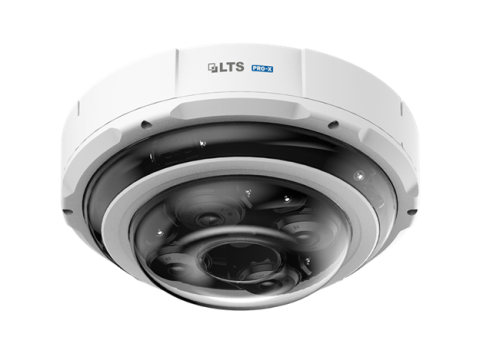Panoramic Security Cameras: A Game-Changer in Surveillance
Panoramic security cameras, often called "fisheye cameras", address a key challenge in traditional surveillance—eliminating blind spots. These cameras deliver a 360-degree field of view, making them an innovative solution for monitoring large, open spaces without the need for multiple devices.
Features and Applications
Panoramic cameras operate using IP technology, offering live, real-time streaming with minimal latency. Unlike PTZ (pan-tilt-zoom) cameras, these devices remain stationary, ensuring stable, uninterrupted footage.
- Design: Most panoramic cameras come in a dome-shaped design, suitable for mounting on ceilings or walls.
- Primary Use Cases:
- Large, open spaces such as gyms, manufacturing plants, open-plan offices, and retail stores.
- Outdoor areas with minimal obstructions, providing comprehensive surveillance coverage.
A single panoramic camera can often replace up to 16 standard cameras, reducing hardware costs and installation complexity.
Strengths of Panoramic Cameras
Comprehensive Coverage:
- Offers a full 360-degree view, eliminating blind spots and reducing the need for additional cameras.
Cost Efficiency:
- Fewer devices: One panoramic camera can replace multiple traditional cameras.
- Reduced software licensing: Requires only one software license for operation.
- Simplified installation: Minimal wiring and infrastructure are needed, cutting labor costs.
Ease of Monitoring:
- Eliminates the need for separate zones of coverage, delivering a unified panoramic image.
Limitations to Consider
Lower Image Detail:
- On average, panoramic cameras offer a resolution of 140 pixels per meter, which is insufficient for precise identification of faces or small objects. For tasks like facial recognition, a resolution of 250 pixels per meter is required.
Not Suitable for Night Surveillance:
- Limited light sensitivity makes them less effective in low-light or nighttime conditions.
High Cost:
- Panoramic cameras are significantly more expensive than traditional surveillance devices.
Restricted Applications:
- Best suited for spacious, open areas without obstructions such as walls or partitions.
Best Practices for Using Panoramic Cameras
Supplement with Traditional Cameras:
- Use conventional cameras for critical zones requiring high detail, such as cash registers, entrances, and fitting rooms.
Consider Lighting Conditions:
- Install in well-lit environments, as panoramic cameras are not optimized for infrared or low-light surveillance.
Strategic Placement:
- Position cameras centrally to maximize their coverage of open spaces.
Conclusion
Panoramic security cameras are a revolutionary tool for wide-area surveillance, offering unmatched coverage and cost-saving benefits. However, their effectiveness is dependent on the environment and specific use cases. They excel in open, well-lit spaces and are an excellent alternative to traditional or PTZ systems for large-scale monitoring needs.

